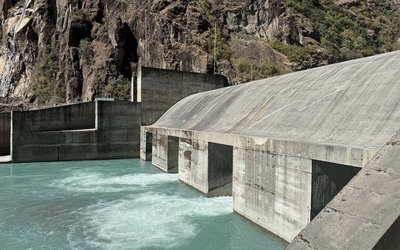With the passing of the constitution of Nepal and the formation of a two-thirds majority government, Nepal had been expecting a wind of change. People glanced here and there to see changes all around. Some parts of Europe experienced floods whilst other parts had heat waves. Parts of the Americas had storms and deluge of rain whilst California experienced the worst wildfires in its history. Following outbursts of repeated volcanic activity in Bali, Indonesia has had three tremors and experienced severe earthquakes at Lompok its well known tourist destination. Lastly has been the destructive earthquake and tsunami at Palu in Indonesia. Yes, the world is going through a topsy-turvy stage. Well renowned leaders are behaving in erratic fashions too. In Nepal also, the death of Nirmala Panta at Kanchanpur and the incompetence or perhaps the subtlety of the local police in destroying evidences and attempt to implicate innocents shows the nadir to which those in power have sunk.
A lot of voices have been heard about whether Nepal, which is now a secular state, should revert back to being a Hindu Rastra. Even the recent replacement of laws in lieu of the Muluki Ain, which came into force as from the first of Bhadra has a number of clauses relating to religion. These are:
- Conversion by emolument, coercion and against ones' will may be punishable with a five year sentence.
- Killing of cows and bulls can land one in jail.
One point to note is that the stray cows and calves let loose on the highways to graze on the grass in the middle of the road or at the sides are sometimes the cause of accidents, even death. Should not the erring calf be put in jail for being the cause of human death! Let our lawmakers ponder over this.
The reality is that some of the concepts of the Hindu religion are rather archaic and need to be reviewed. An example is the final rites practices. Thirteen days of segregation, separated by one’s living kin, eating bland food and being considered an untouchable during this time is not appropriate in this 21st Century.
Late Rajeshwor Devkota’s son performed the thirteen days funeral ritual as dictated by the priests, following his mother’s death. Late Rajeshsworji wanted to bring about changes and decreed that his final rites should be done within seven days and so it was.
As a result of this action which created precedence, late Dr.Upendra Devkota’s final rites were also ground breaking. His wife and three daughters gave the Daag Bati and did Kirya.rites over a period of seven days. It has thus been accepted by their Devkota community originating at Gorkha.
Then Rabin Mishra of the Bibeeksheel Sajha party started observing the final rites of his deceased eighty three year old father Manuj Babu Mishra, the well known artist by announcing that it would be done over a period of five days only. Lastly the final rites of Plastic Surgeon Prof. Dr. Shambhu Nath of Kathmandu Medical College were concluded on the seventh day.
Such actions are recognising the realities of life in this day and age. In olden times, when communication took time and modes of transportation slow, the 13 days were realistic to enable far living relatives to come to mourn. A shorter period of mourning in these changed circumstances makes sense.
But who is to decide on these issues of religious issues and norms related to the Hindu faith in Nepal? Is it the Panchayan Committee of the land? Who are these out of public view figures? What are their capabilities and who gave them that authority? These should be clarified to the public.
Do we as a Nation stress only on the festivals which have great commercial prospects with colourful attires, much eating and dancing and merrymaking? What about those activities where we pay homage to our Gods or do we forget them in this modern age? What about the customs that we follow at times of familial grief?
The award of this year’s Madan Puraskar for the biography of Yogmaya, written by Nilam Karki Niharika is epoch-making. After all the Bhojpur born Yogmaya Neupane and her family were frustrated with the existing customs of the then existing Nepali society. They even went to India but returned soon after. Yogmaya was a fighter against the ills of those times. She raised her voice against child marriage, be it amongst minors or of a minor girl with an elderly man, sati and caste observations. These included paternal dominance of women plus also against the diktats of Brahmin priests. She voiced the thought that just as men remarried after the deaths of their wives, so too should widows be allowed to do so. In 1936 she pleaded with the then PM of Nepal Joodha Shumsher to rectify these ills, but when these were done, she with her 66 devotees committed mass suicide in the Arun river in Eastern Nepal. She was truly the first Nepali female to raise her voice against injustice and should be duly honoured by the state.
There is a saying which goes ‘The old order changeth yielding place to new’. A recent viral dispatch on Facebook Messenger shows and states that it was not only a former Chief Justice but also many notables who were subjected to kneel before Madam President to receive the Dasain Tike whilst many family members were given the luxury to sit on chairs. One wonders if this sort of action had been followed by the previous resident of Sital Nivas. Niccolo Machiavelli, author of ‘The Prince’ was not very wrong when he wrote, “It must be considered that there is nothing more difficult to carry out, or more doubtful of success, or more dangerous to handle, than to initiate a new order of things.”
Can we in Nepal bring about changes easily?

Hemang Dixit
The author writes fiction under the name of Mani Dixit. Website: www.hdixit.org.np. Twitter: @manidixithd
- Top Heavy
- Sep 20, 2023
- Most Able?
- Sep 04, 2023
- Changing Times
- Aug 21, 2023
- Nepali Shenanigans
- Aug 03, 2023
- Budget Naataks
- Jun 29, 2023














